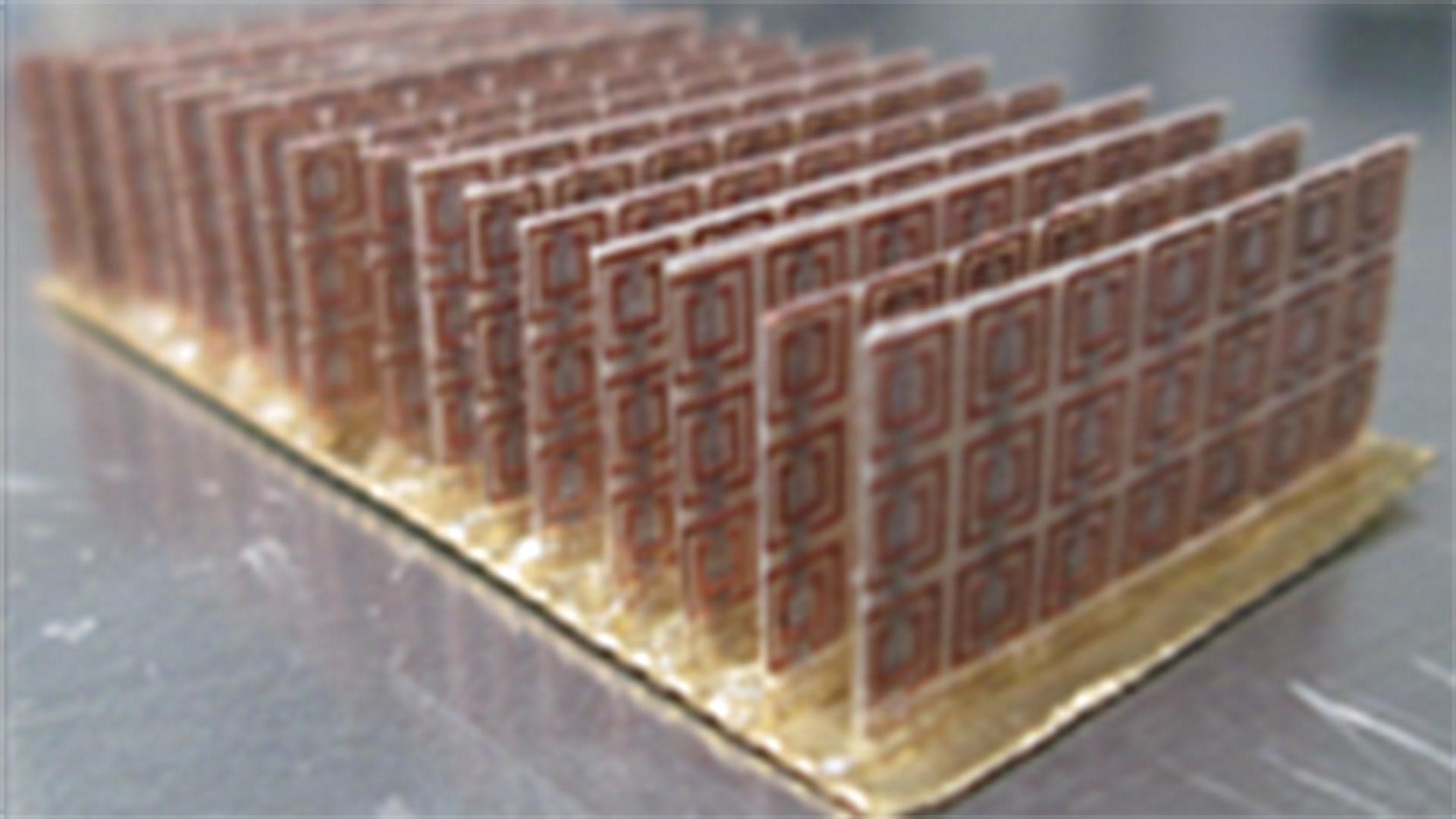The overarching theme of this research is the physics and development of slow-wave electromagnetic structures, with a specific focus on Effective Electromagnetic Materials (EEMs) (or artificial dielectrics). For active RF, High-Power, Vacuum Electronic Devices, over the GHz to THz range. In particular we are interested in understanding the interaction between electromagnetic waves and charged particle beams mediated by novel EEMs, as this interaction can be used to; create and amplify electromagnetic waves by converting the kinetic energy of a charged particle beam into electromagnetic energy, and accelerate charged particle beams.
An Effective Electromagnetic Material consists of a periodic array of sub-wavelength structures that produce many unusual electromagnetic properties derived from their structure rather than their composition. The sub-wavelength structures of the system mean the system can be described as an effective material, using all the associated properties bulk material. Amongst the unusual properties an EEM can exhibit is the ability to exhibit backward Čerenkov radiation, surface waves propagating at the interface with an ordinary material, and the ability to engineer the dispersion relationship of the material. Making these materials very attractive for High-Power Microwave (HPM) generation, amplification, and novel particle accelerator technologies.
Near-zero Materials
This work has multiple projects associated with the area, but a key topic for us at the moment is Near-Zero Materials (NZM). A NZM is a material whose constitutive relations (permittivity and permeability) are very close to zero. Meaning a material operating in this regime will suffer less absorption of the incident electromagnetic wave into the material sub-structure, resulting in a material capable of operating at high power. These materials can have an engineered dispersion relation, even though the permittivity/permeability are close to zero the rate of change dispersion can be large, enabling a beam-wave interaction. Specifically exploring the interaction of NZM EEM with charged particle beams.
This work has been supported with grant income of over £187,000.

